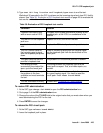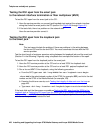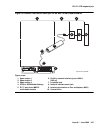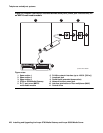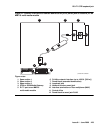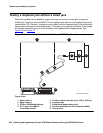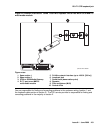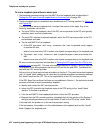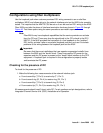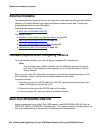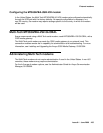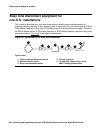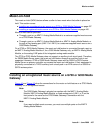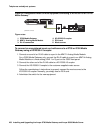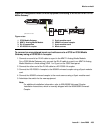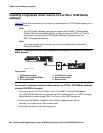
DS1/T1 CPE loopback jack
Issue 9.1 June 2006 433
Configurations using fiber multiplexers
Use the loopback jack when customer premises DS1 wiring connects to an on-site fiber
multiplexer (MUX) and allows wiring to the network interface point on the MUX to be remotely
tested. This requires that the MM710 CSU be set so it can be used on DS1 wiring to the MUX.
Fiber MUXs can take the place of Interface termination feeds as shown in Figure 39
through
Figure 42
. Test these spans using the same procedures as metallic spans.
Note:
Note: Fiber MUXs may have loopback capabilities that the service provider can activate
from the CO end. These may loop the signal back to the CO or back to the DS1
MM710. If the MUX provides the equivalent of a line loopback on the “problem”
DS1 facility, activate it after a successful loopback jack test, and use it to isolate
problems to the wiring between the loopback jack and the MUX.
!
Important:
Important: Be aware that there are installations that use repeater-augmented metallic lines
between the MUX and the “dumb” block. These lines require DC power for the
repeaters and this DC power is present at the “dumb” block interface to the CPE
equipment. A loopback jack is required in this configuration to properly isolate
and terminate the DC power.
Checking for the presence of DC
To check for the presence of DC:
1. Make the following four measurements at the network interface jack:
a. From transmit tip (T, Pin 5) to receive tip (T1, Pin 2)
b. From transmit ring (R, Pin 4) to receive ring (R1, Pin 1)
c. From transmit tip (T, Pin 5) to transmit ring (R, Pin 4)
d. From receive tip (T1, Pin 2) to receive ring (R1, Pin 1)
All measurements should read 0 (zero) volts DC. For pin numbers and pin designations, refer to
Integrated Channel Service Unit (ICSU) Installation and Operation.



